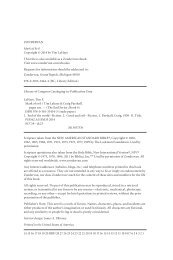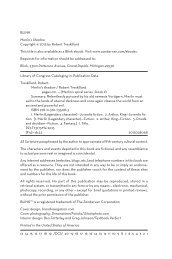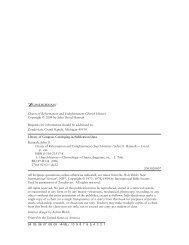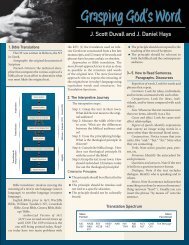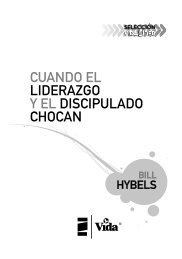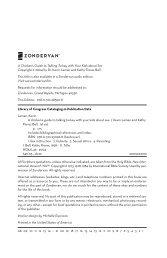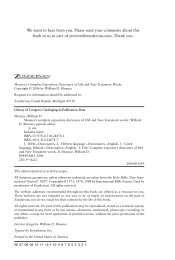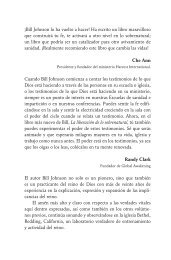Sacred Space: A Hands-On Guide to Creating Multisensory Worship ...
Sacred Space: A Hands-On Guide to Creating Multisensory Worship ...
Sacred Space: A Hands-On Guide to Creating Multisensory Worship ...
- No tags were found...
Create successful ePaper yourself
Turn your PDF publications into a flip-book with our unique Google optimized e-Paper software.
Experiential worship brings the living portions of both styles and traditions <strong>to</strong>gether. Itgives symbols new life and helps emerging generations fall in love with God.What’s more, our lives are so visually driven <strong>to</strong>day that we often don’t even need words <strong>to</strong>describe things or get our point across. Therefore throwing out symbols (and then forgettingthe meanings of these symbols) as a church has eliminated our ability <strong>to</strong> tell the s<strong>to</strong>ry of God <strong>to</strong>an extremely symbolic, visual culture that’s no less hungry for the good news and the s<strong>to</strong>ry ofGod than any other generation. Our culture needs churches that learn again how <strong>to</strong> use symbols.People need churches that teach in ways that engage them, help them engage with God,and enable them <strong>to</strong> experience with all their senses how God relates <strong>to</strong> their everyday lives.A Biblical MandateAn important chapter in The Emerging Church discusses the Bible and worship. 1 Revisitingwhat was covered there, it’s easy <strong>to</strong> see that the Bible very clearly speaks of worship usingother means than simply words. Since <strong>Sacred</strong> <strong>Space</strong> discusses incorporating a variety of expressionsof worship and prayer that involve various senses, it’s good <strong>to</strong> understand that theconcept of experiential worship and prayer does have biblical backing. For instance, whenyou look at worship in the Old Testament, you see that the temple in Jerusalem used muchmore than sermons <strong>to</strong> “get God across.” Every sense was involved: You could smell the burningsacrifices and incense, hear the trumpets and temple choirs, see transcendent architectureof soaring pillars and expansive courtyards. Even the texture and colors of the priests’ clothingcommunicated specific things about God and God’s covenant with Israel.In other places in the Scriptures you can read about other forms of worship and prayerthat involve the senses:Sense of Smell. We see in Revelation 8:4 how incense is used in worship. Throughout theOld Testament incense was common in worship (Exodus 25:6; Malachi 1:11). We see theMagi presenting Jesus with gifts that were multisensory (Matthew 2:11). Philippians 4:18 refers<strong>to</strong> “a fragrant offering...pleasing <strong>to</strong> God.” Even the church itself is <strong>to</strong> be the “aroma of theknowledge of him…the pleasing aroma of Christ” (2 Corinthians 2:14-15).Sense of Touch. We also know that the sense of <strong>to</strong>uch was involved in all forms and practicesof worship. Believers laid hands on others when they prayed (Acts 6:6), clapped theirhands (Psalm 47:1), felt the water as they were baptized (Acts 8:38), and <strong>to</strong>uched the bread incommunion (1 Corinthians 11:23-24).Sense of Taste. The sense of taste is acknowledged quite often in the Bible. Psalm 34:8 says,“Taste and see that the Lord is good.” Psalm 119:103 reads, “How sweet are your words <strong>to</strong> my1Dan Kimball, The Emerging Church: Vintage Christianity for NewGenerations (Grand Rapids, Zondervan, 2003) 127-131.14



